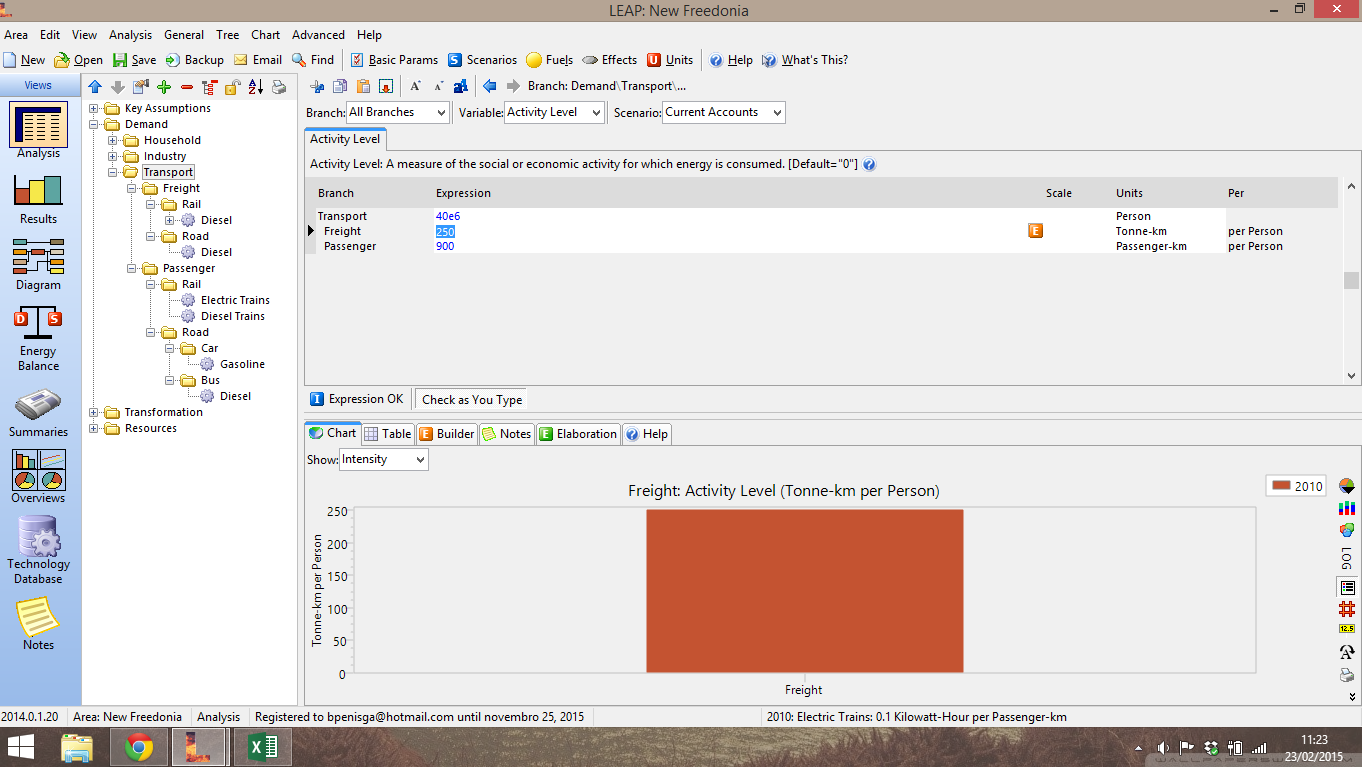Topic: Training Exercise 2.2 - Transport Subscribe | Previous | Next
Bruno Penisga 2/23/2015
1300 Views Hi everyone,
I have done the exercise 2.2 about Transports but I have got the wrong results and I need some help who have got the right values according the results (page 38). Could anyone help me please ?
I'm posting a overview of my tree as well
Cheers
1298 Views Hi Bruno,
Please check that you have calculated all inputs correctly, by working through the table on page 36 of our online training materials:
http://www.energycommunity.org/documents/LEAPTrainingExerciseEnglish2014.pdf
I can see that your passenger-km calculation does not match. After saving your area, you can also open the Freedonia data set and select Area: Revert to Version 2.4.0 to compare your model with a completed version.
Best,
Taylor
1270 Views Thank you very much... I've already got it right for 2010 year. However, I have still some issues about the 2010 onwards years:
(1) When I create the "Income" variable under Key Assumptions, How can I set the average income per capita which is expected to grow from its current level ($3000) at a specific rate (page 37) ?
(2) I put the command "GrowthAs(Key\Income,1.1)" in the fields of passeger travel (for rail, buses and cares) right ?
1268 Views I have done the exercise comparing with the Freedonia,and i think the passenger expression should be 750/40,while the value in the Freedonia is 75/40.The 750 is 200+400+150,that is the sum of total car pass-km,total bus pass-km and rail pass-km.would you please explain it for me? that would be nice,thanks.
1266 Views Hi Bruno,
I'm afraid I'm not understanding your question. When you create a Key Assumption for Income, you would enter the 2010 value into Current Accounts, and then any projections (for example, using the Growth() function) in the Reference scenario. You will then make a variable reference to this value, using the GrowthAs() function, which you have already described. You'll do something similar for the growth in total population, since the total demand for passenger transportation depends on both the "passenger-km per person" as well as the total population.
Feel free to clarify your question, if this doesn't help!
Taylor
1266 Views Hi Jin,
I wonder if you've accidentally misplaced a scale factor which has caused you some confusion. The total passenger-km from cars + buses + rail is 20 + 40 + 15 *billion* p-km, which is then divided by the population of 40 million - this gives a value of 75/40 *thousand* p-km/person.
Best,
Taylor
1264 Views HI Taylor,
THANK YOU VERY MUCH for your reply and explanation, I got it .
And I've got another qestion: It's about the 3.1 Charcoal Production in Exercise 3- Transformation,PAGE 41. The paper say "No charcoal is imported or exported",then how to set its output fuel properties. Is it like this?
JIN
1264 Views Hi Jin,
Those output fuel properties are fine, though the instructions really only mean that both the Import Target and Export Target variables should be set equal to zero.
Best,
Taylor




